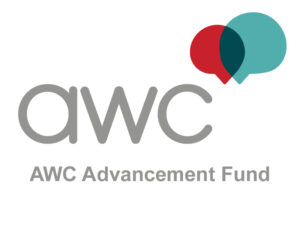In the marketing world, we’ve all been hearing about leading with empathy since the COVID-19 pandemic struck, and for good reason: our audiences have a whole new set of fears, needs, and desires, and tone-deaf messaging carries a higher risk than ever.
For both internal and external communications, understanding your audience has always been key to delivering effective messaging. Part of this is anticipating questions and concerns your communications (whether they’re ads, emails, Slack messages, Town Hall speeches, etc.) will provoke in your audience and doing your best to answer or mitigate those in the communications themselves.
The difference in COVID-19 is that the questions and concerns carry a ton of extra weight. The risk of poorly aligned, non-vetted communications is huge, and although it’s hard to talk about opportunity without sounding, well, opportunistic, the opportunity to forge meaningful connections is there for marketers as well.
In this post, we’ll touch on how to use empathy to communicate effectively, both internally and externally, in the age of social distancing – and we’ll talk about how this will influence communications in the long term.
External Comms
Imagine sitting down to your laptop in early April and seeing an ad campaign telling its audience to hug a stranger, seek person-to-person connection, or merrily toilet-paper a neighbor’s tree. Those ads may have been conceived in good faith, but without careful vetting focused on COVID-related triggers, they’re potential PR nightmares because they don’t anticipate the audience’s emotional conditions.
On the other hand, companies making extra efforts to soothe worries with messaging like “contact-free delivery,” “we happen to think you look great in loungewear,” and the like are establishing genuine connections with their customers that, with mindfulness, can extend past the age of social distancing.
As the COVID-19 pandemic grinds along, marketers have to remember that part of empathy is anticipating fatigue – there’s only so much “IN THESE UNPRECEDENTED TIMES” messaging people can absorb without some eye-rolling. Marketers who can walk the fine line of respect for the severity of the COVID threat and relate to the feeling of needing a break from it all (as shown in this Progressive ad) are getting kudos from a grateful audience.
The upshot: marketers can’t just say “empathy” and be done with it; they need to use empathy to understand what the audience needs and wants to hear – which in this case is a break from empathy-driven cliches. Staying on top of the audience’s evolving needs and fears is a lesson we should all carry forward.
Internal Comms
As far as internal communications go, over-communication from the top is far better than a vacuum of messaging as the news cycles churn out stories of rising unemployment rates. At 3Q, I huddle with our executives at least weekly to talk about what we’re hearing from our colleagues, what our current situation and challenges are, and how to communicate those clearly and graciously, always including ways to help support each other as we all work remotely. When (eventually) our offices reopen and the big picture begins to stabilize, we’ll likely need to give less frequent updates and let our colleagues’ inboxes breathe a little.
Over the past few weeks, our employees’ major concerns have evolved from “Will I get sick?” to “Can our agency survive?” to “Will I lose my job?” to “When do we get to go back to our offices?”, with a lot of sub-concerns about business travel, how to juggle work and childcare at home, how to make sure a home office setup is ergonomic, etc. All of these concerns are valid and don’t yet have clear-cut answers (although I can confidently say that our agency is in relatively good shape), so the trick is getting a pulse on employees through conversations and surveys and making sure we’re addressing concerns as they surface. Even saying “we don’t know, but we’re working on it” is far more reassuring than radio silence.
The keys here are proactivity (staying ahead of a question will let you control the narrative), honesty/accountability (be transparent about progress and set reasonable expectations), and an understanding of major concerns and the right time/place/messenger to address them. Again, these keys are more critical than ever in COVID-19, and they carry additional challenges because almost all communication is now delivered remotely. But while the stakes may be higher, the foundations are the same – and should only have more credence when COVID-19 subsides.

Hillary Read will be presenting a special issue webinar for the Association for Women in Communications on June 10, 2020 at Noon CDT. Learn more and register here.
About the Author
 Hillary Read is Head of Corporate Communications at 3Q Digital, a growth marketing agency based in Chicago with 8 offices in the U.S. She joined 3Q in August 2011 after over 5 years of eCommerce site and product management. In her past life in journalism, Hillary was a sportswriter for the Burlington (VT) Free Press and a sports copy editor for the Boston Globe. She graduated from Harvard with a degree in English; she has also spent time in New Mexico as an artist-in-residence (fiction writing) at the Helene Wurlitzer Foundation in Taos, NM. She currently serves on the board of both Lyric Theatre (VT) and the Young Writers Project.
Hillary Read is Head of Corporate Communications at 3Q Digital, a growth marketing agency based in Chicago with 8 offices in the U.S. She joined 3Q in August 2011 after over 5 years of eCommerce site and product management. In her past life in journalism, Hillary was a sportswriter for the Burlington (VT) Free Press and a sports copy editor for the Boston Globe. She graduated from Harvard with a degree in English; she has also spent time in New Mexico as an artist-in-residence (fiction writing) at the Helene Wurlitzer Foundation in Taos, NM. She currently serves on the board of both Lyric Theatre (VT) and the Young Writers Project.

